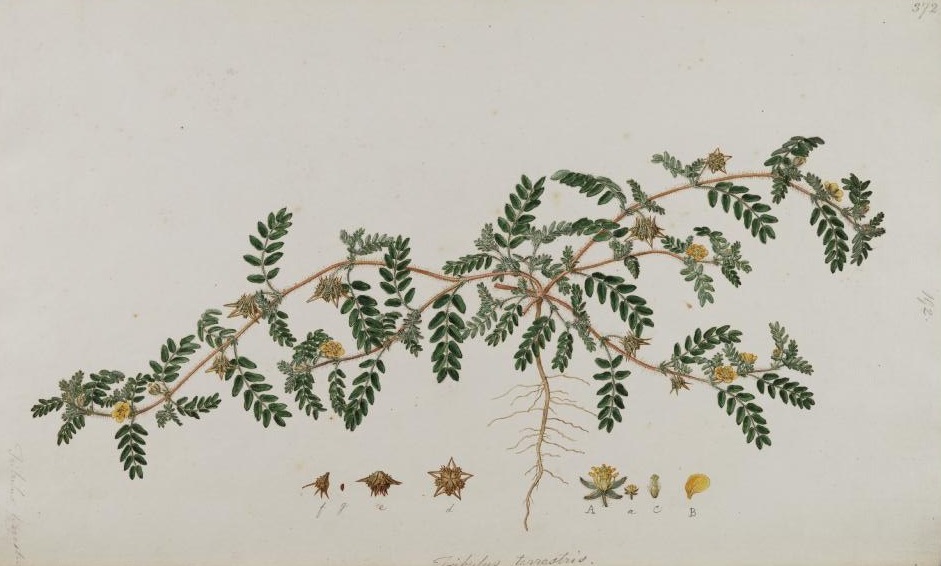! Nouveau site ici !
Vita > Plantae > Magnoliophyta > Magnoliopsida > Sapindales >
Zygophyllaceae > Tribulus
Tribulus terrestris
![Illustration Tribulus terrestris, Par Descourtilz, M.E., Flore [pittoresque et] médicale des Antilles (1821-1829) Fl. Méd. Antilles vol. 4 (1827) [tt. 233-304] t. 250, via plantillustrations](../inc/images/illustrations/tribulus_terrestris2.jpg )
 | * - ***
| * - ***
Vita > Plantae > Magnoliophyta > Magnoliopsida > Sapindales >
Zygophyllaceae > Tribulus
Tribulus terrestris
![Illustration Tribulus terrestris, Par Descourtilz, M.E., Flore [pittoresque et] médicale des Antilles (1821-1829) Fl. Méd. Antilles vol. 4 (1827) [tt. 233-304] t. 250, via plantillustrations](../inc/images/illustrations/tribulus_terrestris2.jpg )
Une herbe mince. C'est une plante annuelle. Il atteint 30 à 60 cm de hauteur. Il rampe sur le sol. Les tiges sont velues. Les feuilles sont composées. Ils sont divisés le long de la tige en plusieurs foliole... (traduction automatique)
→suite
⬀
Le  donne accès au menu
donne accès au menu (c'est votre point de repère) 😊 ;
En dessous vous avez la classification, à partir de la vie (Vita, premier rang) jusqu'à la classe au dessus de la plante, dont vous trouvez ensuite le nom scientifique/botanique (latin) puis le nom commun (français), le cas échéant ;
C'est aussi un lien vers la fiche complète (tout comme la ✖, en bas à droite, et le +, en dessous de la description) ;
Vient alors l'illustration (ou ce qui la remplace, en attendant), la comestibilité :
Et en bas
⬂


![Illustration Tribulus terrestris, Par Descourtilz, M.E., Flore [pittoresque et] médicale des Antilles (1821-1829) Fl. Méd. Antilles vol. 4 (1827) [tt. 233-304] t. 250, via plantillustrations - Fermer Illustration Tribulus terrestris, Par Descourtilz, M.E., Flore [pittoresque et] médicale des Antilles (1821-1829) Fl. Méd. Antilles vol. 4 (1827) [tt. 233-304] t. 250, via plantillustrations - Fermer](../../inc/images/illustrations/tribulus_terrestris2.jpg )


